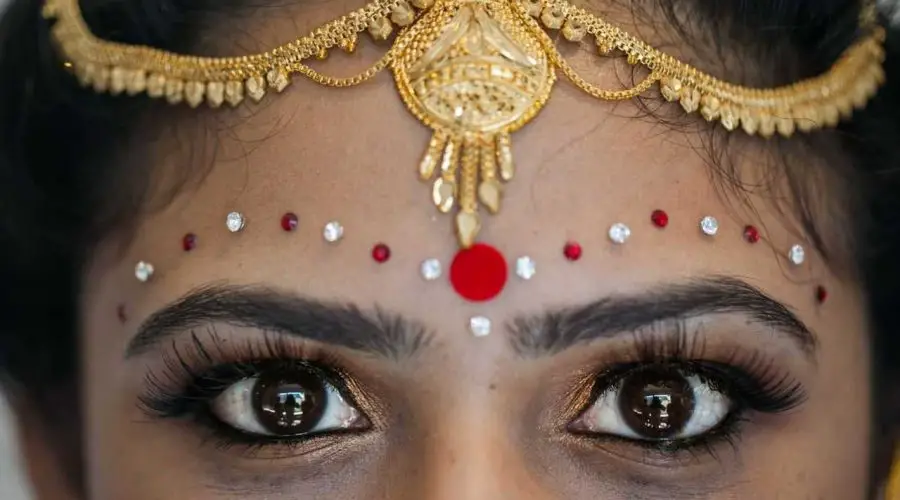Know the Significance of Bindi in Hindu Tradition | A Detailed Insight
Aside from the lovely saris and gold jewellery that define most of the Indian subcontinent’s culture, the bindi, a red dot put between the eyebrows on the forehead, is one of the most worn body adornments by Hindus.
Bindi has been taken from the Sanskrit word “Bindu”, which means drop or particle. Because of the different languages and dialects spoken in India, bindis are also known by other names such as kumkum, sindoor, teep, tikli, and bottu. However, regardless of place or language, the bindi’s meaning stays the same.
The Vedas were written about 3000 BC by the rishi-muni (old Hindu seers), who detailed the presence of chakras (concentrated energy centres). The Ajna chakra, also known as the “brow chakra” or “third eye chakra,” is the sixth of the seven primary chakras that run through the centre of the body, and it is precisely where the bindi is put.
Ajna means “command” or “perceive” in Sanskrit, and it is said to be the eye of intuition and intelligence. When anything is seen in the mind’s eye or in a dream, it is also seen by Ajna, according to the Vedas.
As a result, the bindi’s goal is to strengthen the chakra’s abilities, especially by enabling one’s capacity to access their inner knowledge or guru, allowing them to perceive the world and interpret things in a true, impartial way, as well as to let go of their ego and false labels.
According to Hindu belief, everyone has a third inner eye. The two physical eyes are used to perceive the outside world, while the third is used to see within to God. As a result, the red dot represents piety while also acting as a continual reminder to keep God at the forefront of one’s consciousness.
A red-coloured bindi is also considered to be an auspicious symbol of marriage. Her crimson bindi is thought to bring wealth and establish her as the family’s newest protector when the Hindu bride crosses the threshold of her husband’s house. Women in certain societies may cease wearing bindis when their husbands die away.
However, the bindi’s meaning is no longer rigidly followed in current times. Bindis are currently widely used as beauty accessories and are available in a variety of forms, sizes, and colours.
Frequently Asked Questions
1. What does bindi mean in Hinduism?
The bindi, which is traditionally worn as a red dot on the forehead, has Hindu origins and is often associated with religious or marital status. Because red bindis represent marriage, widowed ladies frequently changed their bindis to black.
2. What does it mean when a woman wears a bindi?
The bindi can represent various parts of Hindu culture, but it has always been a red dot worn on the forehead, most typically to symbolise a married lady, from its inception.
3. How do bindis stay on?
Apply a thick layer of glue to the bindi’s back. You don’t want it to seep out around the bindi, so don’t apply too much. Allow 30 seconds to 1 minute for the adhesive to cure.
4. Can a widow wear bindi?
Widows do not wear sindoor or bindis because their husband has passed away. On the day of her wedding, her spouse applies the sindoor for the first time; this is known as the Sindoor Daanam ritual. She then puts it into practise on a daily basis.

